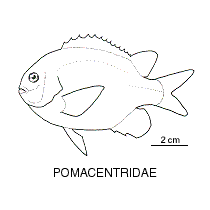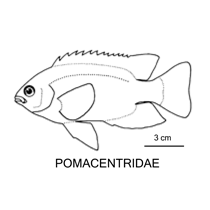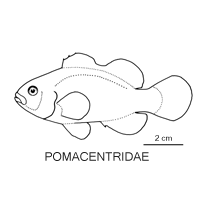- Classification
- ACTINOPTERYGII
- PERCIFORMES
- POMACENTRIDAE
-
Fish Classification
-
Class
ACTINOPTERYGII Ray-finned fishes -
Order
PERCIFORMES Perches and allies -
Family
POMACENTRIDAE Damselfishes -
Genera
Abudefduf(7) Acanthochromis(1) Amblyglyphidodon(6) Amblypomacentrus(1) Amphiprion(13) Azurina(1) Cheiloprion(1) Chromis(37) Chrysiptera(16) Dascyllus(5) Dischistodus(6) Hemiglyphidodon(1) Lepidozygus(1) Mecaenichthys(1) Neoglyphidodon(5) Neopomacentrus(6) Parma(9) Plectroglyphidodon(11) Pomacentrus(27) Pomachromis(1) Pristotis(1) Pycnochromis(4) Stegastes(3) Teixeirichthys(1)
Family POMACENTRIDAE
Common name: Damselfishes
Summary:
Cite this page as:
Damselfishes, POMACENTRIDAE in Fishes of Australia, accessed 02 Jul 2025, https://fishesofaustralia.net.au/Home/family/154
More Info
|
Family Taxonomy |
|
|
Family Distribution |
|
|
Family Feeding |
|




















































































































































































































































































































































































































































































































































































































































































































































































































































































































































































































































































































































































































